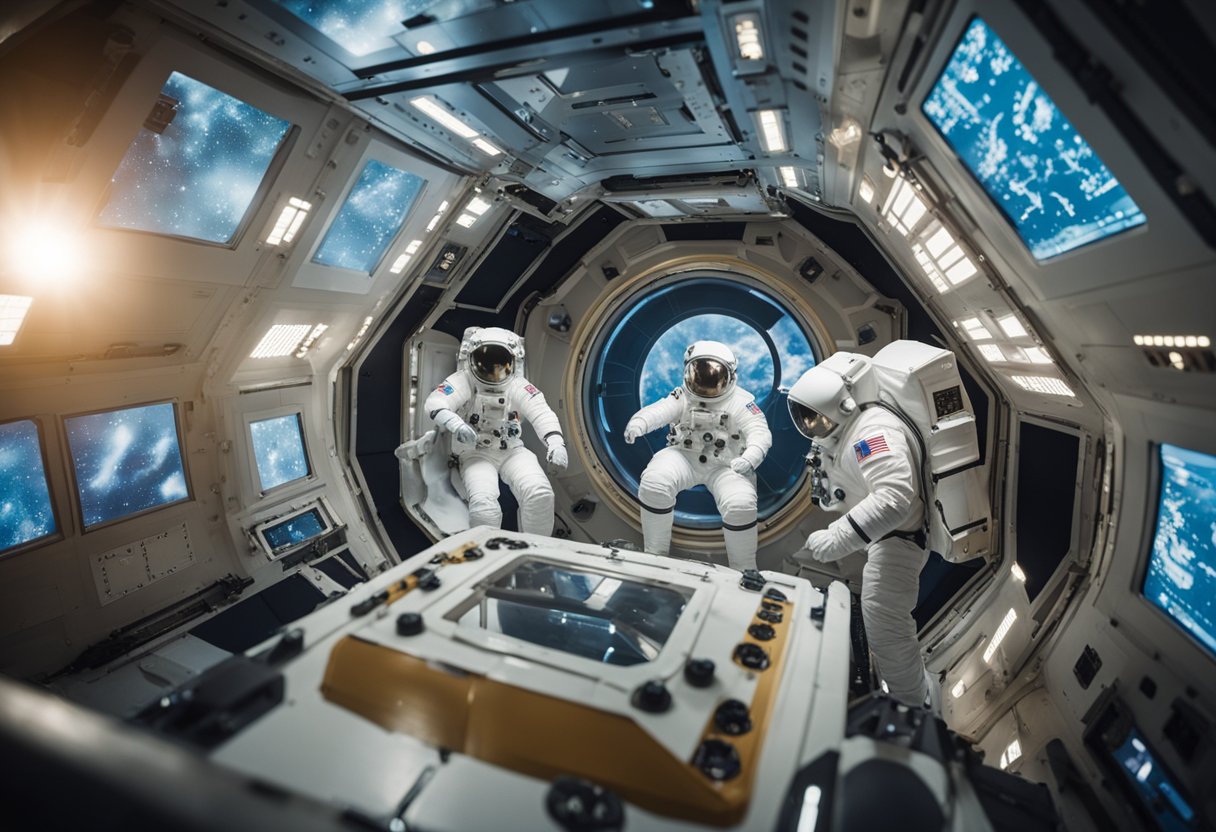
Astronauts and space tourists alike require comprehensive training to prepare for the unique conditions of microgravity, as the experience of zero gravity is utterly unlike any on Earth. We use various methods to simulate weightlessness, each providing a piece of the larger puzzle of preparing individuals for the rigours of space flight. This training is not only crucial for the safety and success of missions but also ensures that every participant can fully engage with and accomplish their objectives in space, whether it be for research, maintenance of a space station, or the enjoyment of a space adventure.
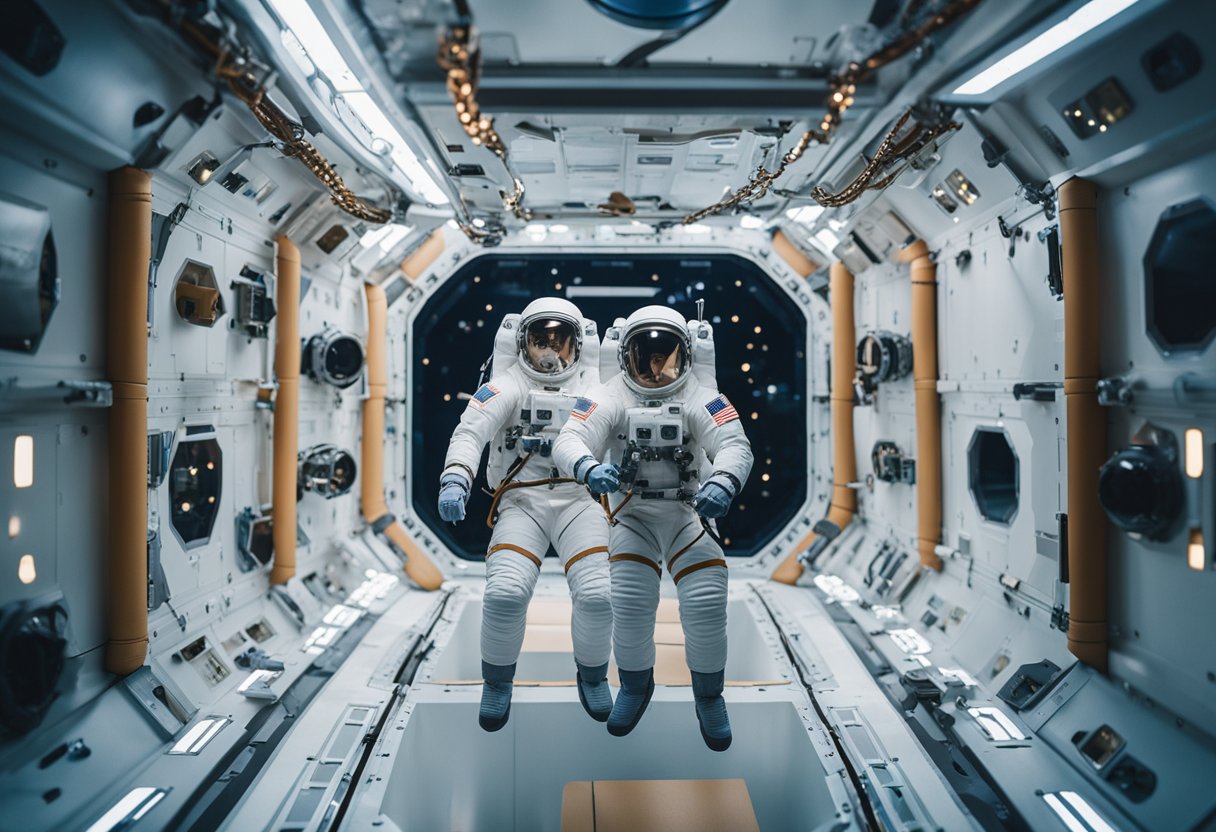
In replicating the zero gravity environment of space, we employ aircraft parabolic flights, neutral buoyancy in swimming pools, and specialised drop towers, among other techniques. Each method offers its own advantages and serves to acclimatise trainees to the sensation of weightlessness and the challenges that come with it. Our focus on customising training regimens to fit the particular demands of a mission ensures that astronauts are well-prepared for their specific tasks in orbit, while space tourists can maximise their enjoyment of this once-in-a-lifetime experience.
In this section, we’ll explore zero gravity, a condition where objects are free from the pull of gravity, and its implications for the human body, particularly in the unique environment of space.
Zero gravity, or microgravity, describes a state where the force of gravity is not noticeable. It’s not the absence of gravity—since the gravitational pull exists everywhere in the universe—but refers to the condition of free-falling, where objects appear weightless to each other. This phenomenon is best exemplified on the International Space Station (ISS), where astronauts experience weightlessness. Our knowledge extends from theoretical physics to practical applications through rigorous training simulations, like parabolic flights, which replicate these conditions.
The human body undergoes significant changes under the unique conditions of microgravity. Our bones and muscles are accustomed to working against Earth’s gravity, and when in a weightless environment, they begin to weaken—a process known as muscular atrophy and bone density loss. Furthermore, fluid distribution changes, causing facial puffiness and a shift in blood volume. To mitigate these effects, astronauts partake in specially designed fitness regimes, such as The Zero-G Workout, to maintain muscle and bone strength.
Microgravity research not only allows us to comprehend these changes but also prepare for them, in anticipation of more prolonged space journeys—perhaps even those offered by SpaceVoyageVentures.com, as space tourism becomes a reality. Through such research, we’re paving the way for humanity’s future amongst the stars.
In our journey through the annals of space exploration, the quest to understand and harness the phenomena of zero gravity has been pivotal. We examine the pioneering strides from early experimental forays to NASA’s significant contributions in this domain.
Our understanding of zero gravity began with rudimentary experiments which set the stage for more complex investigations. Scientists sought to comprehend the implications of weightlessness on physical objects and, eventually, human physiology. The earliest techniques to simulate this condition were simple yet ingenious, involving reduced gravity aircraft manoeuvres. Their findings were crucial in paving the way for prolonged space missions.
The establishment of NASA marked a watershed moment in zero gravity research. We witnessed the construction of specialised facilities like the Zero Gravity Research Facility, operational since 1966, which became instrumental for the progress of our endeavours. Recognising the complexity of space systems, NASA’s Zero-G facility has contributed significantly to the refinement of spacecraft technology, enabling components and fluids systems to be tested under microgravity conditions. Our implementation of these resources elucidates the behaviour of various phenomena—ranging from combustion to biotechnology—that can only be fully understood in the absence of gravity.
Astronaut training programmes are designed to prepare individuals for the demanding environment of space. Within these programmes, astronauts undergo extensive training to operate and live on structures like the International Space Station (ISS).
At NASA, astronaut training is rigorous and comprehensive, encompassing a variety of skills required for missions to the ISS and beyond. Candidates undergo training in space station systems, learning how to operate the complex machinery and technology aboard the station. Practical skills are honed through a combination of land and water survival training, highlighting the importance of being prepared for emergency situations during launch or re-entry phases.
Physical conditioning and acclimatisation to zero gravity are achieved through Neutral Buoyancy Lab sessions, where underwater activities simulate the weightlessness experienced in space. Our spacefarers also prepare for extravehicular activities (EVAs), more commonly known as spacewalks, which are an essential part of station maintenance and operational tasks.
To facilitate international cooperation aboard the ISS, we partake in collaborative training programmes with space agencies around the globe. This is a testament not only to our collective scientific endeavours but also to the shared goal of advancing human spaceflight.
Our astronauts take part in various international programmes to gain familiarity with the different modules and systems developed by international partners. This training ensures that whether they are operating a Canada Arm or conducting experiments in the Japanese Kibo laboratory, they are adept and proficient.
We also extend knowledge and experience to burgeoning entities in the private sector. SpaceVoyageVentures.com is a notable example, keeping the public informed about the possibilities of space tourism and providing insights into the kind of training commercial passengers can expect as space travel becomes more accessible.
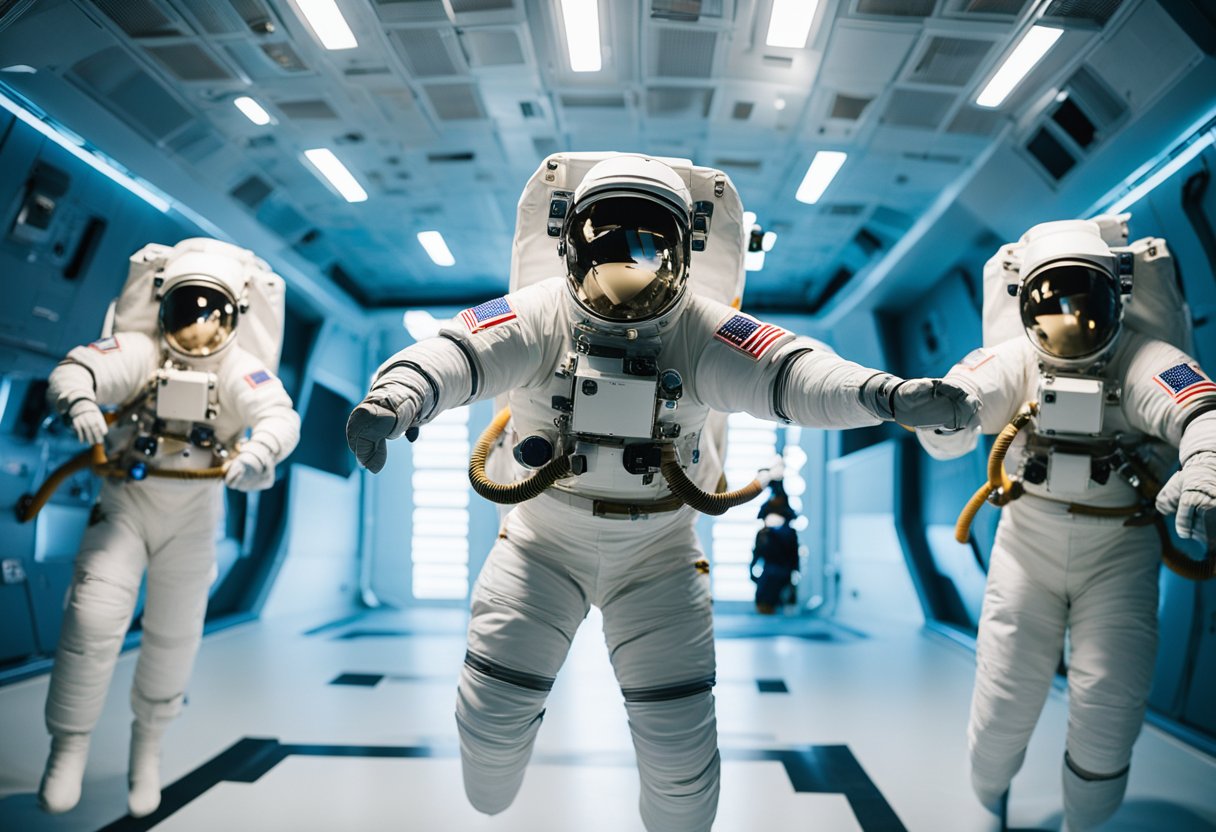
We explore the most sophisticated and effective methods for replicating the elusive zero gravity conditions found in space. Our focus is on two distinct techniques that have significantly contributed to astronaut training programmes and research: aircraft parabolic flights and neutral buoyancy via scuba diving. These training methods are crucial for preparing individuals for the unique challenges posed by a microgravity environment.
Aircraft parabolic flights create short periods of microgravity by flying in a parabolic arc. As the plane reaches the top of the parabola and starts the free-fall segment of the arc, passengers experience weightlessness for approximately 20-30 seconds. This technique is instrumental for astronauts to get a real feel of zero gravity environments.
Such flights are often referred to as “vomit comets” due to the intense, stomach-churning sensations they can produce. However, these sessions are invaluable for hands-on experience. NASA’s Zero-G facility offers these conditions for research purposes as well.
Neutral buoyancy scuba diving serves as another technique for simulating zero gravity on Earth. By carefully adjusting their buoyancy, scuba divers can achieve a state that mimics weightlessness underwater. This approach is especially useful for practising the intricacies of spacewalking.
Divers undergo detailed training for achieving neutral buoyancy which is a key component of astronaut training regimes and provides an excellent analog for zero gravity environments. The Neutral Buoyancy Lab at various NASA facilities is a prime example where such techniques are applied.
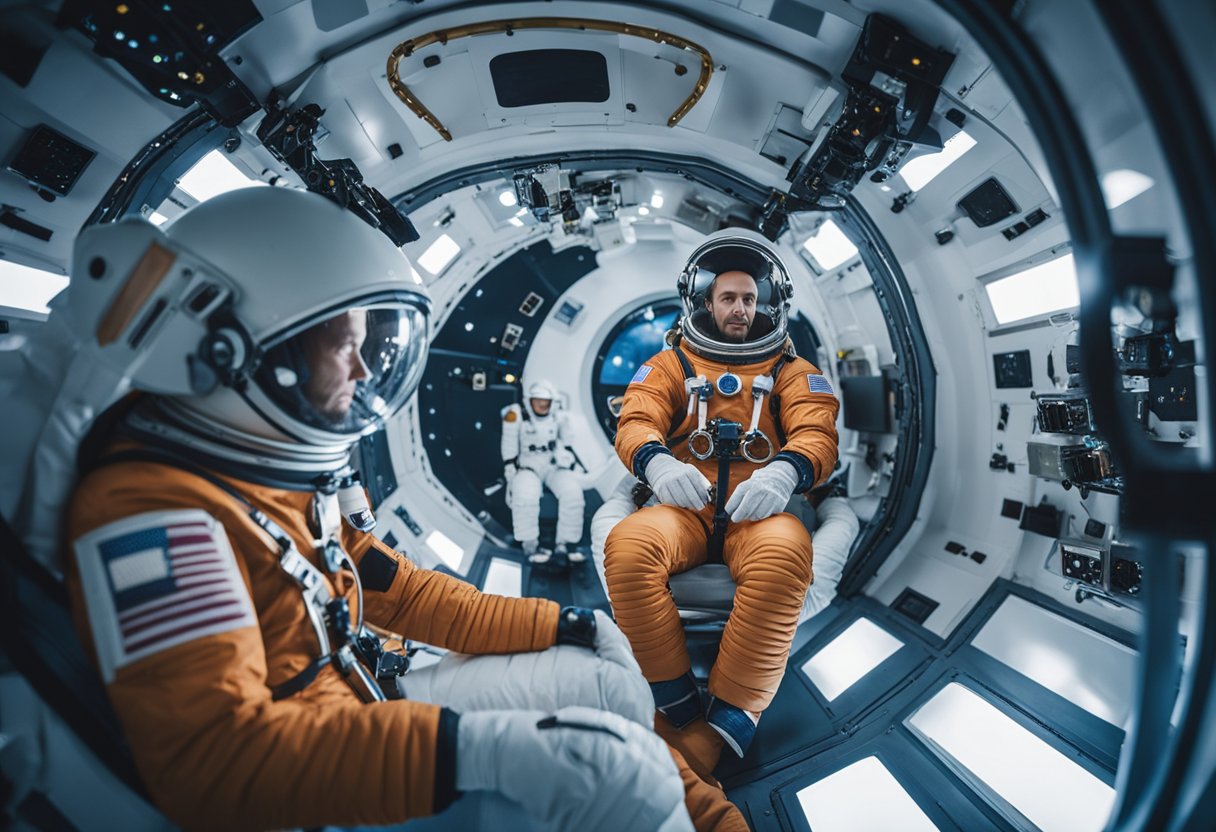
Our role in tailor-made training is crucial for the success of space missions. We ensure that astronauts are not only prepared for the conditions of space but also specifically equipped for the unique challenges of their designated missions.
We’ve observed that the lunar environment presents distinct challenges requiring specialised training. Our moon mission training focuses on lower gravity levels compared to Earth, and we teach techniques to manoeuvre and conduct scientific research effectively in these conditions. Our programme, detailed on Orbite’s Orbital Training, highlights the science behind the body’s reaction to space travel, preparing astronauts for the moon’s gravitational pull.
The journey to Mars demands extensive preparation due to its vastly different terrain and atmosphere. Our training regimen for Mars missions involves rigorous simulations that replicate the Martian environment. Trainees become adept at handling equipment and conducting experiments in a setting that mimics Martian gravity. Furthermore, we cover the psychological aspects of long-duration spaceflight, as addressed by courses like those found at Inner Space Training. These preparations ensure our astronauts can contribute valuably as team members during Mars explorations.
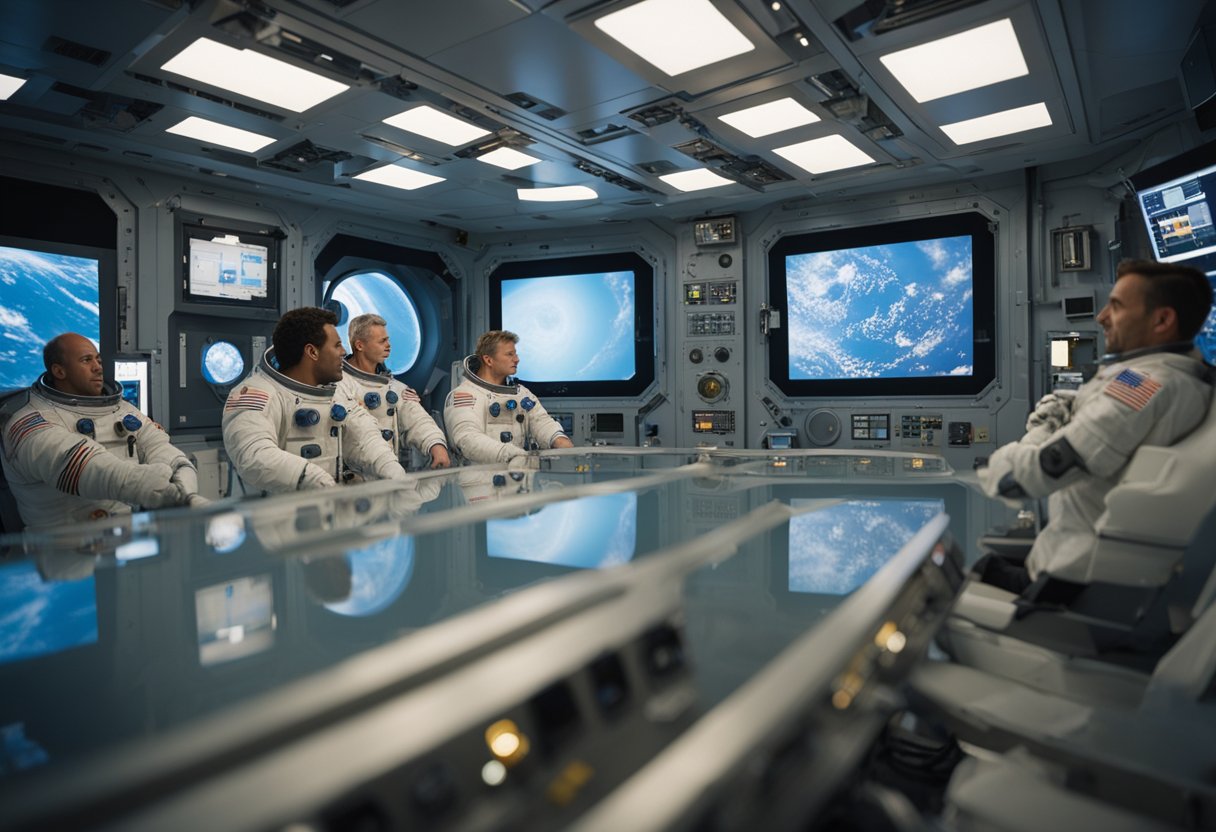
In preparing astronauts for life aboard the International Space Station (ISS), training for routine operations and emergency protocols is crucial. This training ensures that crew members can competently maintain station functions and respond to potential crises.
Our routine operations training encompasses a myriad of tasks that are critical for the day-to-day management of the ISS. This training includes, but is not limited to:
Training for emergency protocols ensures that we are prepared for any contingency that may arise on the space station:
This integral training is constructed in a way that reinforces our ability to operate the ISS safely and efficiently, guaranteeing that every crew member is adept in both standard and critical operations.
As space tourism becomes a tangible reality, it’s crucial for potential space tourists to undergo zero gravity training. These programmes are designed to educate and prepare individuals for the weightless environment they will experience during their journey.
We’ve seen a surge in companies offering zero gravity training to prepare space tourists for their extraterrestrial adventures. Companies such as Orbite offer comprehensive training programs that go beyond the basics of experiencing weightlessness. They incorporate aspects of spacecraft operations, emergency procedures, and in-depth doctrinal education to ensure space tourists are well-prepared for their voyage. Many of these programmes take place in specialised facilities or through modified aircraft flights that simulate zero-gravity conditions.
Training for zero gravity also involves a detailed set of pre-flight preparations. This primarily includes acclimatisation to the unique physical sensations and movement techniques in a zero-gravity environment. For some, this might include flights on modified aeroplanes, often referred to as “vomit comets”, which create short periods of weightlessness. Additionally, participants receive instruction on space safety, navigation, and coping mechanisms for the psychological impacts of space travel.
Aspiring space tourists should note that these preparation activities are both rigorous and essential for a safe and enjoyable spaceflight experience.
Our knowledge of previous and currently available experiences, such as the ones documented by Zero-G, assures us that immersive programmes are already providing civilians with a taste of what astronauts endure. Meanwhile, platforms like SpaceVoyageVentures.com are poised to be a repository of information on the future of space tourism, including training options soon available.
In this section, we’re exploring the advancements and applications of microgravity research in areas such as biology, medicine, and physical fluid systems. Our focus is on how these domains utilise microgravity conditions to further our understanding and open up new possibilities for science and technology.
Under microgravity conditions, we observe unique cellular responses and biological processes that are not present in Earth’s gravity. This enables us to conduct microgravity research to better understand human physiology, such as muscle atrophy and bone density loss, issues astronauts face during spaceflight. For example, the Zero Gravity Research Facility at the Glenn Research Center provides an environment for such studies, offering insights into future countermeasures for these health concerns.
Recent efforts have also included the development of advanced biotechnologies, which this Space Life Sciences Training Program at Ames Research Center investigates. These help prepare for deep space exploration by enabling research into biological systems within different gravity levels.
Our understanding of fluid systems is fundamentally altered in a microgravity environment. Traditional physics of fluids rely heavily on the influence of gravity, but in microgravity, capillary action and surface tension become the dominant forces. This has profound implications on fluid systems research, leading to novel insights into processes ranging from heat transfer to complex fluid dynamics.
Studies performed in the unique conditions of microgravity help us understand how to better manage liquid fuels in space, improve designs of fluid-based systems in spacecraft, and enhance our knowledge for applications on Earth. The experiments necessitate the simulation of space-like conditions as seen through parabolic flight missions, which can be used for research similar to what is described in this training and education requirements article for pharmacists in zero gravity.
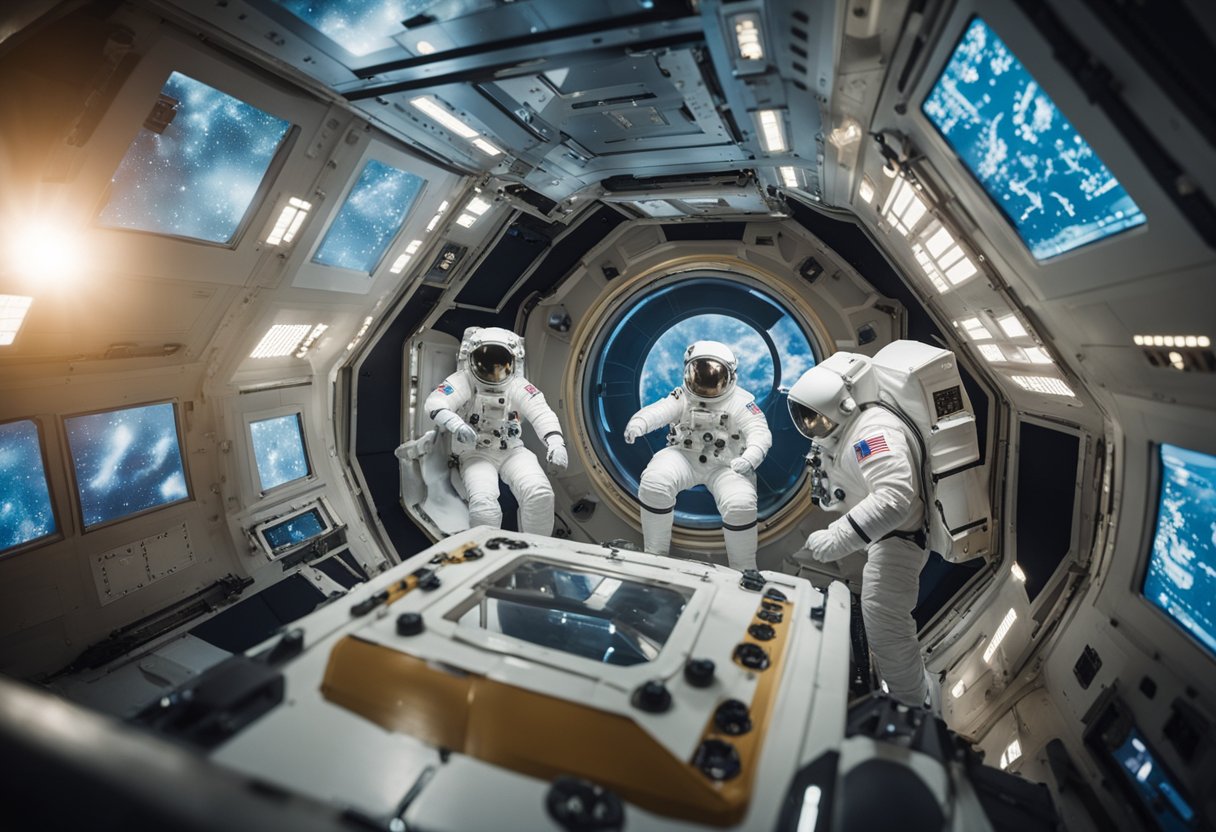
As we prepare humans for the intricate dance with the cosmos, an understanding of the space environment is crucial, particularly the radiation astronauts are exposed to in zero gravity. Here, we’ll explore the two critical aspects that shape our approach to safe space exploration.
The space environment is replete with various forms of radiation, which pose a significant challenge during spaceflights. We discern three primary sources of space radiation: particles trapped in Earth’s magnetic field, solar energetic particles from the Sun, and galactic cosmic rays. Galactic cosmic rays, in particular, present a formidable obstacle due to their penetration capabilities, making them difficult to shield against.
One of our core strategies to mitigate these risks is the implementation of protective shielding on spacecraft and the employment of precise mission planning to avoid solar flare events. Advances in materials science provide us with newer and more effective shielding properties. In addition, our collaboration with the Horizon Zero Gravity Flight Program affords us valuable data on microgravity’s impact on various materials, which is instrumental in enhancing radiation protection.
The human body experiences significant changes in a zero-gravity environment, where the lack of gravitational forces can lead to muscle atrophy and bone density loss. Moreover, the pernicious effects of space radiation amplify concerns relating to long-term health, such as increased cancer risk.
In our endeavours, we focus on comprehensive astronaut training, which includes preparation for space station operations and the challenges posed by the space environment. This intensive preparation, akin to a ‘boot camp’, is broadly forged on a foundation of different specialisations, as outlined by StarLust’s overview on astronaut training. Exercise routines, nutritional adjustments, and real-time health monitoring are pivotal in our strategy to uphold astronaut health.
By fostering vigilance around space radiation and a commitment to the physical well-being of astronauts, we advance towards ensuring that the bold leap into space is a perpetual stride in human achievement, not an ephemeral dance with the stars.
Space Exploration and Zero Gravity: As we continue to push the boundaries of space exploration, zero gravity training becomes increasingly critical. Our understanding of microgravity environments is integral to the preparation of astronauts and enthusiasts alike, as we look toward long-duration spaceflight and habitation. Zero gravity training is not only about acclimatising to a weightless environment but also about conducting research and testing equipment that will support life in space.
Research and Development: The evolution of zero gravity training involves sophisticated simulations and virtual reality technologies. These tools allow for a more immersive experience and the ability to replicate complex tasks that astronauts will perform in space. We are also witnessing an integration of artificial intelligence to personalise training modules and predict how individuals might react to zero gravity, thereby enhancing the effectiveness of the training.
Education and Accessibility: Our commitment to educational outreach means that the principles of microgravity are now being shared with students and the public. Programmes like those described by the Aurelia Institute enrich our understanding and inspire future generations. Additionally, efforts are being made to make this training accessible to a broader audience, as seen through initiatives such as AstroAccess that aim to accommodate participants with disabilities.
Space Tourism: With the advent of space tourism, companies such as SpaceVoyageVentures.com are documenting the journey towards this exciting new frontier. This includes the development of zero gravity experiences that could become a routine part of astronaut training for commercial passengers. As we prepare for this new era, our training programmes will continue to evolve to ensure safety and enrich the human experience beyond Earth’s atmosphere.
In summary, the future of zero gravity training is a combination of advanced technology, widened access, and the cultivation of a society that looks upwards to the stars with expectation and ambition.
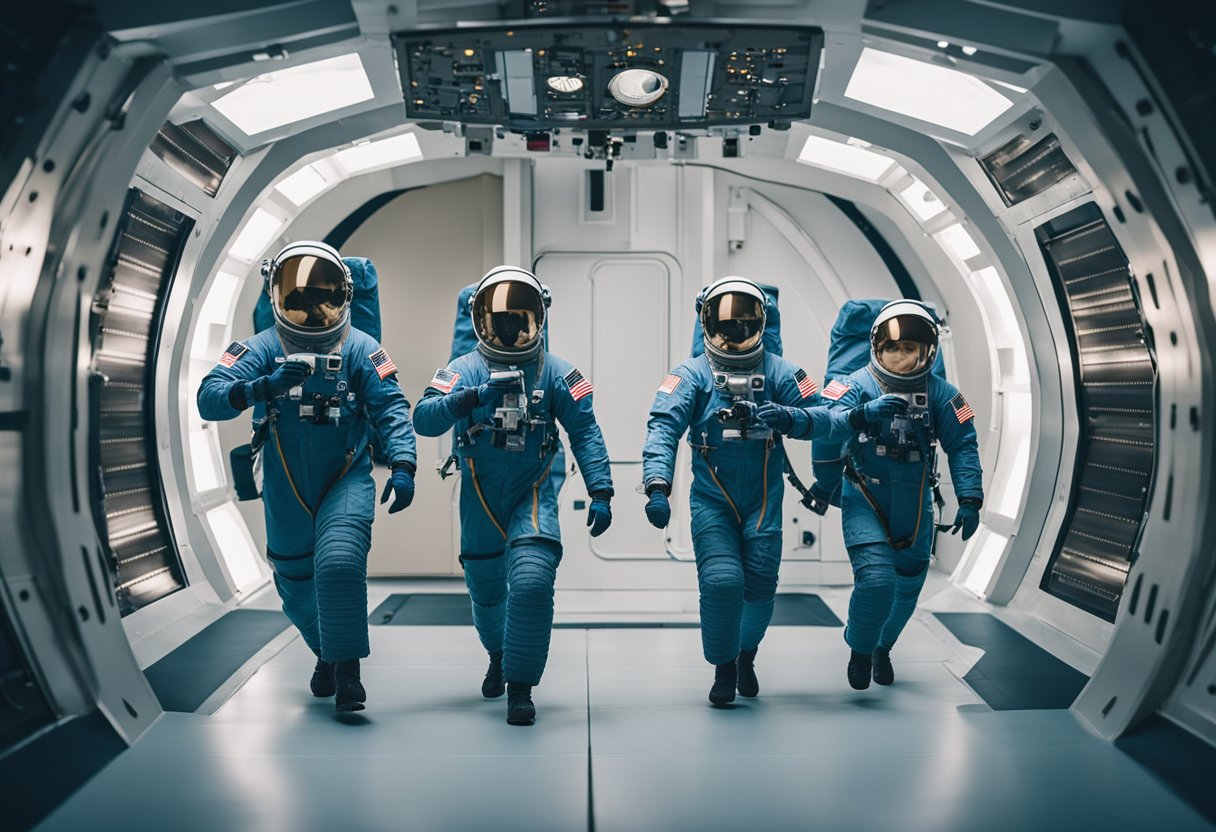
Exploring the cosmos has always been a human aspiration, and now, with advancements in technology, experiencing zero gravity is within reach for both astronauts and the public. In this section, we address some of the most common queries related to zero gravity training and experiences.
The most effective zero gravity training programs include NASA’s Reduced Gravity Program which prepares astronauts for spacewalks, and commercial ventures such as Zero Gravity Fargo that offers an introduction to Pole Fitness in a simulated zero gravity environment.
The cost of a zero gravity experience can vary widely depending on the provider and the duration of the experience, with prices ranging from a few hundred to several thousand pounds for more immersive programs.
Zero gravity simulators open to the public can be found at various space and aeronautics facilities, such as the U.S. Space & Rocket Center, which features the Multi-Axis Trainer. Such simulators offer a taste of the astronaut training experience.
NASA prepares its astronauts through various programs that simulate microgravity on Earth, including parabolic flights on aircraft and neutral buoyancy lab trainings, where astronauts practice in a large swimming pool designed to mimic the weightlessness of space.
While bona fide zero gravity conditions cannot be replicated at home, certain balance and strength training exercises can help mimic aspects of zero gravity training and improve one’s adaptation to weightlessness.
Anti gravity treadmills can be rather costly, often upward of several thousand pounds, and are typically purchased from specialist medical or sports equipment providers. These treadmills are used to reduce weight loading, thus allowing for rehabilitation and low-impact training.